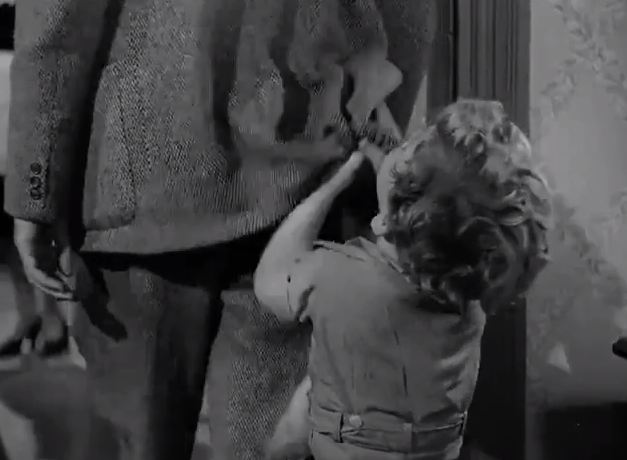The general assumption regarding recurring dreams is that they are trying to get our attention. This is true, of course, but not only because they are trying to tell the dreamer something about him or herself, as is often assumed. As difficult as this may be to accept, recurring dream images want our attention for their sake, not merely ours. When we give our attention to dream images for their sake, however, we are at the very same time bringing attention to what is “between” us, between the dreamer and the dream images, and therefore to the connectedness of things.
I find it helps to regard recurring dream images as one might a “toddler.” As illustrative example, you may recall that marvelous scene in It’s a Wonderful Life–the holiday film classic with Jimmy Stewart playing the part of George Bailey. It’s Christmas Eve and George has just learned that 8,000 dollars from the Bailey Building and Loan has gone missing. He is completely undone and utterly preoccupied with the implications of what the missing money will mean for him and his family, and for his business.
Meanwhile at home, and unaware of this latest development, George’s wife, Mary, and the Bailey children prepare to receive the extended family for a holiday celebration. Click on the link below to watch the film clip:
It’s a Wonderful Life . . . George Bailey and Family
Fully five times Tommy says, “Excuse me,” while tugging at his father trying to get his attention. Like little Tommy, recurring dream images try relentlessly to get our attention. And just like George, we too are also mostly impatient with the intrusions.
But this scene also illustrates for us the “timing” of recurring dreams. Whether they take place over a few days or weeks, months, or even years, it seems that recurring dream images are trying to puncture our self-preoccupation. Suffering, as is the case in this scene with George Bailey, makes us “feel” as though we are separate and isolated, utterly alone. Our place in the “center” of the drama, therefore, becomes highlighted.
This is precisely when recurring dream images come along to try to get our attention, to remind us that we are not alone. And, because of their persistence, they’re actually very good at it. Like little Tommy Bailey, recurring dream images can be quite relentless. Too often, however, we turn the image’s hard won attention back on ourselves by asking, “What is this recurring image trying to tell me about me?”
Rest assured that if recurring dream images are trying to tell us anything about ourselves, it’s that we are too pre-occupied with “feeling separate and isolated.”
We have forgotten that we are but small dreamers in a much larger dream. And we have likewise forgotten that the medium is the message–that dreams are trying to companion us, take us out of feeling isolated and separated, and into noticing, not only that we are connected, but how we are connected. That is why it’s not generally the content of the recurring images that penetrates dreamers so much as the appearance and reappearance of the images. Dreams, and especially recurring dreams, remind us that we are never isolated, never separate, regardless of how it sometimes feels.
It all comes down to a practice of noticing. When a dream image’s recurrence is firmly established, what we want to do is to acknowledge its creative persistence. It recurrence shows us that it is really interested in, and devoted to, getting our attention.
“I see you,” therefore, is a good way to start acknowledging a recurring image. You might want to follow this with a gesture of gratitude: “Thank you for your tireless devotion.” Next you may want to offer yourself to the image for its sake: “Is there anything you want of me, or from me, or somehow through me?”
And finally, and most importantly, resist the temptation to answer this last question in a fill-in-the-blank sort of way. The practice is simply to ask the question in an ongoing way without looking for an answer.
Unfortunately, we are in the rather dreary cultural habit of looking everywhere for answers. The dreamtime, however, is not a realm that is terribly concerned with answers. The dreamtime IS concerned, deeply and intimately, with responses; it is, in fact, a Call and Response realm. So just our capacity to ask these kinds of questions, and to keep asking them, is what opens us up to connected, imaginal relatedness and creative receptivity.




0 Comments